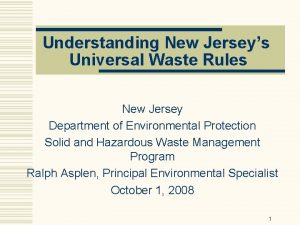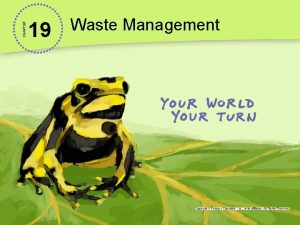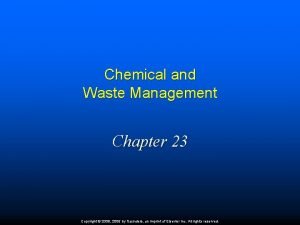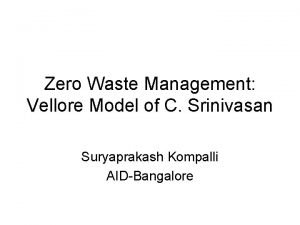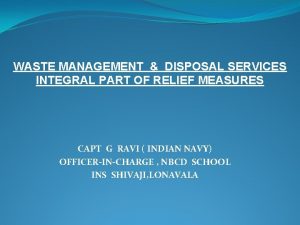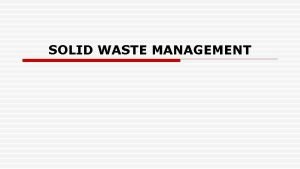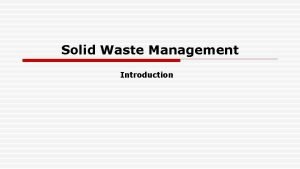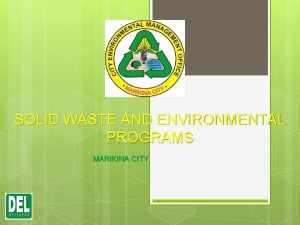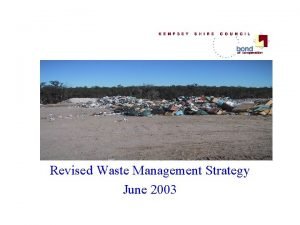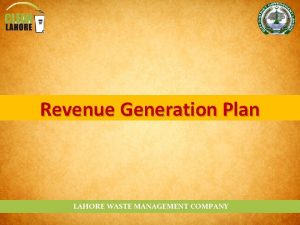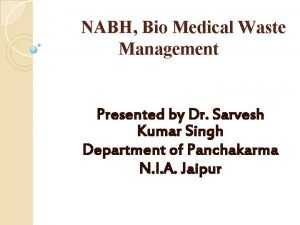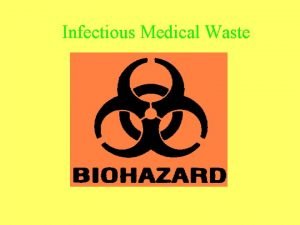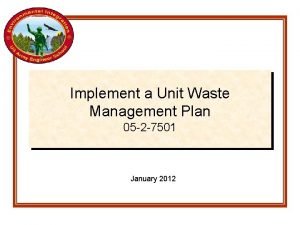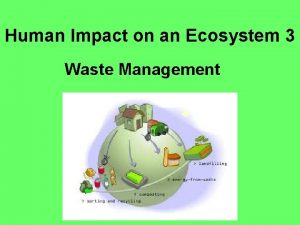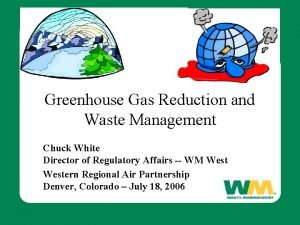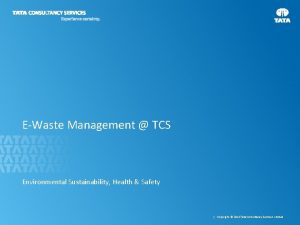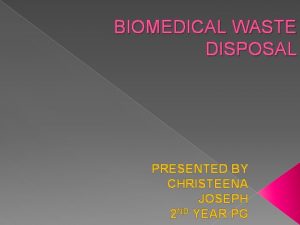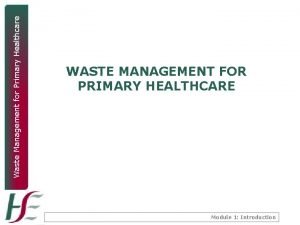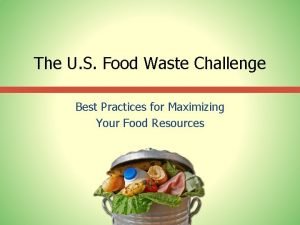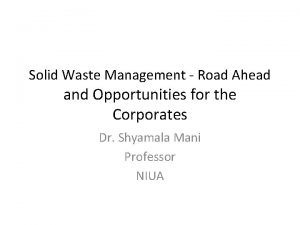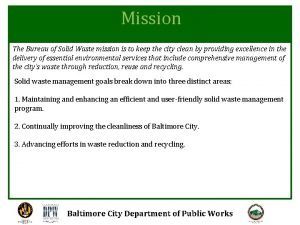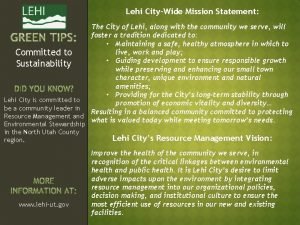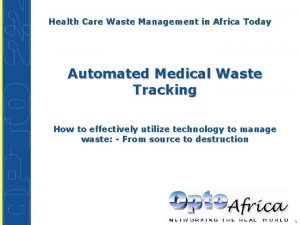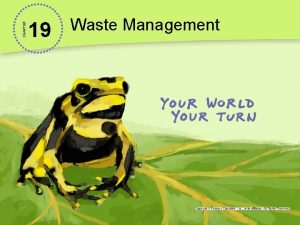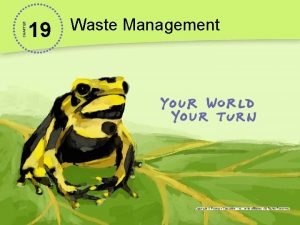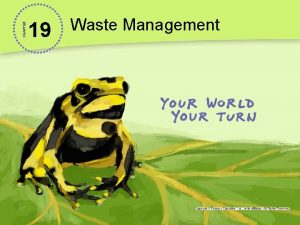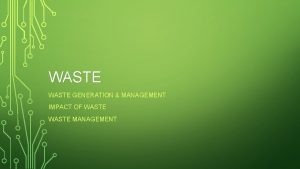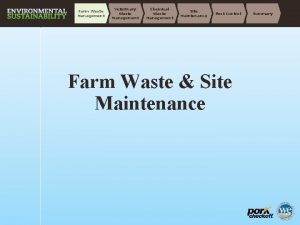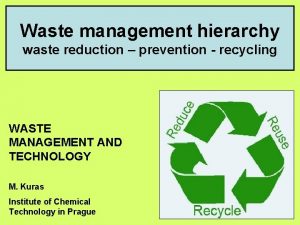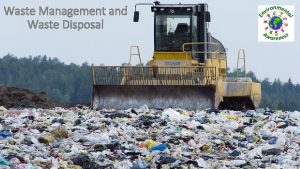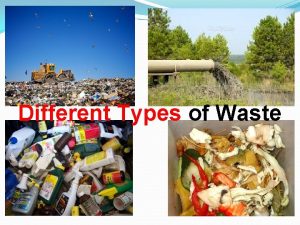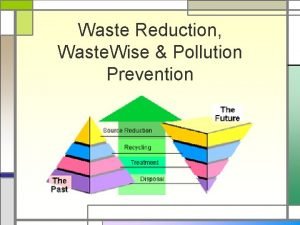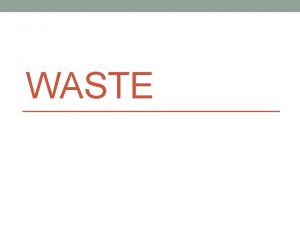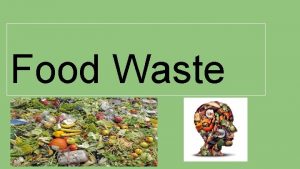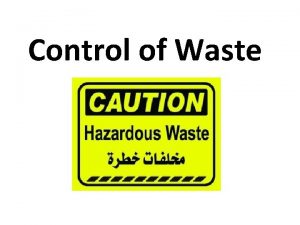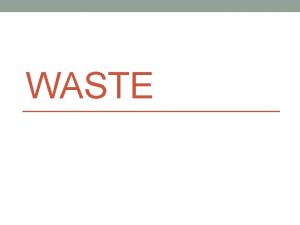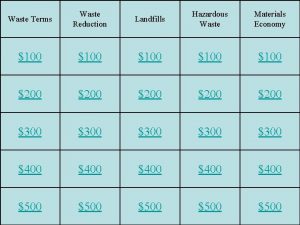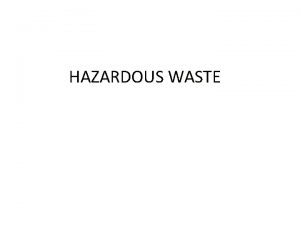CHAPTER 19 Waste Management Transforming New Yorks Fresh





























- Slides: 29

CHAPTER 19 Waste Management

Transforming New York’s Fresh Kills Landfill • Fresh Kills, on New York’s Staten Island, is the largest landfill in the world. • It closed in 2001, forcing New York City to find other places for its trash, at great expense to taxpayers. • Today the landfill is in the process of becoming a public park. Talk About It Which should play a greater role in reducing the waste we generate—personal choices by consumers or government regulation?

Lesson 19. 1 Municipal and Industrial Waste Of all the solid waste produced in the United States, 33. 9% is made up of paper. How much waste do you generate?

According to the EPA… • The average American produces more than 4. 5 pounds of garbage a day! • This is 29 pounds per week and 1, 600 pounds per year! • America produces enough garbage to form a line of garbage trucks to reach the moon, cover the state of Texas 2 ½ times, or bury more than 990, 000 football fields!

Lesson 19. 1 Municipal and Industrial Waste What Is Waste? • Any unwanted material or substance that results from a human activity or process Did You Know? The average American generates more than 4. 5 pounds of trash per day. • Municipal solid waste: From homes and businesses • Industrial waste: Resulting from manufacturing, agriculture, and mining • Hazardous waste: Toxic, reactive, flammable, and corrosive • Wastewater: Includes used, discarded water and runoff

Lesson 19. 1 Municipal and Industrial Waste What Is Waste?

Lesson 19. 1 Municipal and Industrial Waste Bangalore, India

Lesson 19. 1 Municipal and Industrial Waste Methods of Solid Waste Disposal: Sanitary Landfills • Waste buried in the ground or carefully piled into mounds • Designed to prevent groundwater contamination and minimize soil and air pollution Did You Know? Regulations require that landfills be at least 6 m above the water table.

Lesson 19. 1 Municipal and Industrial Waste Benefits and Costs of Landfills Benefits Costs Decomposition yields methane, which Leachate may eventually escape can be used like natural gas. and contaminate the groundwater. When full, landfills are capped. The land can be used for recreation. Trash decomposes very slowly. Few communities are willing to host landfills (NIMBY). Ohio Leak A power company in Hull, Massachusetts installed a large wind turbine on a site that had previously been a landfill.

Lesson 19. 1 Municipal and Industrial Waste What Is NIMBY? Not in my backyard! As a result of the NIMBY syndrome, landfills are rarely located in neighborhoods that are home to wealthy and educated people with the political power to keep them out. TED talk-Environmental Justice

Lesson 19. 1 Municipal and Industrial Waste Incineration

Lesson 19. 1 Municipal and Industrial Waste Benefits and Cost of Incineration Benefits Incinerating waste reduces its weight by up to 75% and volume by up to 90%. Costs Toxic ash must be disposed of. Heat from burning trash can be used to generate electricity (waste-to-energy). Dioxins, heavy metals, and PCBs can be created and released by burning waste. SWEDEN NEEDS YOUR HELP! Toxic Substances Control Act Incinerator The only U. S. facility permitted to burn certain hazardous wastes

Lesson 19. 2 Minimizing Solid Waste TED: Pacific Garbage Patch In 2007, Americans recycled or composted nearly 1/3 of municipal solid waste, saving energy equivalent to 10 billion gallons of gas.

Lesson 19. 2 Minimizing Solid Waste Reduction Methods • Substitute disposable goods with reusable ones. • Donate unwanted items. • Minimize packaging. • Reduce use of nonbiodegradable plastic. • Design goods to last. • Use financial incentives such as “pay as you throw” garbage disposal and “bottle bills. ” Did You Know? States with “bottle bills” (consumers receive a refund per returned bottle or can) have reduced their beverage container litter by 69– 84% and total litter by 30– 64%.

Lesson 19. 2 Minimizing Solid Waste Recovery: Composting • Conversion of organic waste into mulch or humus by decomposition • Currently 3800 municipal programs in the U. S. • Has many benefits, including soil enrichment Did You Know? About 20% of U. S. waste is made up of organic material that could be composted.

Lesson 19. 2 Minimizing Solid Waste Recovery: Recycling • Collection and reprocessing of waste materials • Recycling rates among U. S. communities vary from 5 to 50%. • Many programs run at a financial loss, but that doesn’t take into account the effects of not recycling.

QUESTION!! True or False: The amount of waste has significantly decreased due to the advancement of computers and technology.

ANSWER!! False! Its generated a new type of waste! Computers, printers, copiers, VCRs, DVDs, fax machines, i. Pad mini, i. Pod, i. Phone, PSP, x. BOX, GPS, Android, Nooks, Kindles…. You get the picture.

Lesson 19. 3 Hazardous Waste Common sources of hazardous waste include batteries, cleaning agents, paints, and pesticides. E-Waste

QUESTION!! What are the four criteria used to define hazardous waste?

WRITE THIS! What Is Hazardous Waste? • Ignitable: Can catch fire • Corrosive: Can damage or destroy metals • Reactive: Chemically unstable; can explode or produce fumes when combined with water • Toxic: Harmful or fatal when inhaled, ingested, or touched

DON’T WRITE THIS! Sources of Hazardous Waste • Industry produces the most hazardous waste, but it is usually highly regulated. • Household hazardous waste is unregulated. Did You Know? The average American home contains about 100 pounds of hazardous waste in different products.

Which are hazardous waste? • Paint • Cosmetics • Laundry Bleach • Styrofoam • Plastic • Nail Polish

DON’T WRITE THIS! Types of Hazardous Waste • Organic compounds: Can act as mutagens, carcinogens, teratogens, and endocrine disruptors • Heavy metals: Many cause neurological damage over time. • E-waste: Contains heavy metals and toxic chemicals, but mostly treated as conventional solid waste Did You Know? U. S. households threw out about 304 million electronic devices in 2005—most were still in working order.

DON’T WRITE THIS! Hazardous Waste Disposal • Landfills: Specifically designed to keep hazardous waste contained • Surface impoundment: Liquid waste poured into shallow lined pits; water evaporates and solid waste is transported elsewhere • Deep-well injection (see diagram on right): Wastes injected into deep, confined porous rock layers

Lesson 19. 3 Hazardous Waste Radioactive Waste • Waste that gives off harmful radiation • Low-level: Less harmful; produced by hospitals, labs, uranium mines • High-level: More harmful; produced by nuclear power plants • Difficult to dispose of safely due to long half-lives Did You Know? As of March 2010, the Obama administration has ruled out Yucca Mountain for long-term storage of high-level radioactive waste.

Lesson 19. 3 Hazardous Waste Regulation • Resource Conservation and Recovery Act (RCRA): Sets standards for hazardous waste management by states; requires industry to track hazardous material “cradle to grave” • Comprehensive Environmental Response Compensation and Liability Act (CERCLA), or “Superfund” Act: Federal program for cleaning up sites polluted by hazardous waste; culprits held liable for damage caused by their pollution Did You Know? As of 2007, 1354 of the 1569 Superfund sites have been cleaned up.

FORM AN OPINION!! Some nations make manufacturers responsible for reducing e-waste. Companies must recover used and discarded electronic devices that they sell to consumers. Do you think this is a good idea? Why or why not? If not, offer an alternative means of reducing ewaste.

QUESTION!! The Resource Conservation and Recovery Act requires large generators of hazardous waste to track hazardous materials “from cradle to grave. ” Explain what this means.
 Universal waste label
Universal waste label Fresh oil, new wine scripture
Fresh oil, new wine scripture Chapter 19 waste management answers
Chapter 19 waste management answers Chemical and waste management chapter 23
Chemical and waste management chapter 23 Chapter 16 toward a new heaven and a new earth
Chapter 16 toward a new heaven and a new earth C srinivasan waste management
C srinivasan waste management Recommendation of waste management
Recommendation of waste management Waste management chalmette
Waste management chalmette Bakery waste management
Bakery waste management Introduction to waste management
Introduction to waste management Introduction to waste management
Introduction to waste management Solid
Solid Eco savers program
Eco savers program Waste management mission
Waste management mission Lahore waste management company
Lahore waste management company Hand washing steps according to nabh
Hand washing steps according to nabh Define infectious waste
Define infectious waste Segregation of hazardous waste
Segregation of hazardous waste Waste management 3r
Waste management 3r Waste management (now wm) - wichita hauling
Waste management (now wm) - wichita hauling Tcs environmental management assessment
Tcs environmental management assessment Inertization of biomedical waste
Inertization of biomedical waste Modern waste management technologies
Modern waste management technologies Policy on waste segregation
Policy on waste segregation Food waste management software
Food waste management software Conclusion on waste management
Conclusion on waste management Waste management mission
Waste management mission Lehi city waste management
Lehi city waste management Hazardous waste neha
Hazardous waste neha Management of health care waste
Management of health care waste
